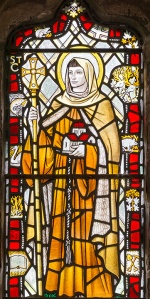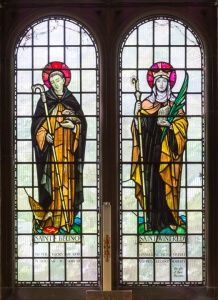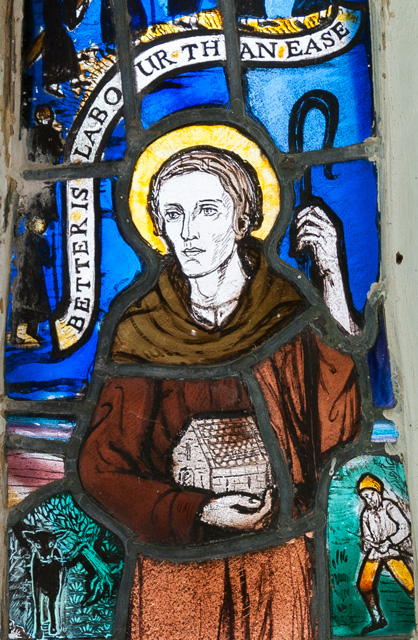Establishing some of the basic facts about stained glass windows can be surprisingly troublesome. I have written previously on this blog about the difficulties of attributing windows to makers and designers and it is sometimes a challenge to provide dates for windows as well.
As work on Welsh Saints from Welsh Churches came to a conclusion last year I was left with a small number of windows that I wanted to publish but was unable to attribute, which I found very frustrating. A few that I decided to include in the book remain anonymous works but there were others that I managed to attribute by various means prior to publication.
These included a lovely window of St Cadog from the little church at Llanddetty, with details from the Life of Cadog around the border. I found this window by chance when I visited the church, It was not mentioned in the Buildings of Wales volume for Powys and, having found it, I couldn’t trace a faculty for it. Judging by the style of the window, I was initially sure that it was by Powell & Sons, only to find that it was not included in the provisional list of windows by the firm compiled by Dennis Hadley.
I began to wonder whether the window might be by one of Powell’s designers and considered Carl Edwards, who became their chief designer in the 1940s but left the firm in the 1950s. It was not on the list of his works published by Tony Benyon, but after I got in touch with him, he thought that the window could well have been designed and made by Edwards, around the time that he parted company with the firm.
There were hitherto only two places where Edwards’ work could be found in Wales, with a window by him at St Davids Cathedral and a set of small windows that he made not very far from Llanddetty at Llyswen. Looking at the window again more recently, Tony Benyon was more doubtful that it was by Edwards. It looks more like the many windows made by Powell’s in the immediate post-war period than those made independently by Carl Edwards for Llyswen or St Davids, although there are some parallels. Hopefully new evidence on the designer and maker of the window will come to light.
A couple of windows of a similar date at Holywell had also puzzled me. A lovely window in the Anglican church adjacent to the medieval well chapel featured both Beuno and Gwenfrewy (Winefride), and although it had no dates on it, a little research into the family history of those who gave the window established that it was probably made at some time in the 1950s. As with the window at Llanddetty, I haven’t seen any references to the window in any publication, and the church had no information about it. Even Malcolm Seaborne’s listings of stained glass in Flintshire omits it, presumably because he could find no information about it.
I tentatively attributed the window to Goddard & Gibbs although I had been unable to find many windows of a similar date and style by the firm. Having asked a couple of other researchers, Christopher Parkinson kindly shared examples of their work that he had recorded in England, and some of these windows demonstrated a few similarities. The firm made a window not far away from Holywell at Whitford, and combined with these stylistic tendencies there seemed to be a strong possibility that they had made the Holywell window as well. The window at Whitford is later and in a more modern style, mirroring the changes that I saw in windows by the firm of the 1950s and 60s that Chris shared with me.
The chapel over the well chamber at Holywell is in the care of Cadw and the exterior of the chapel has an assortment of late medieval carved details around the string course on the upper storey. Inside the chapel is a single stained glass window, which is illustrated in T.W. Pritchard’s book on Gwenfrewy, but not dated or attributed. The overall effect and design of the window was good and appeared to date from some time in the second half of the twentieth century, although the figure drawing in the four roundels has a naivety that I found hard to identify.
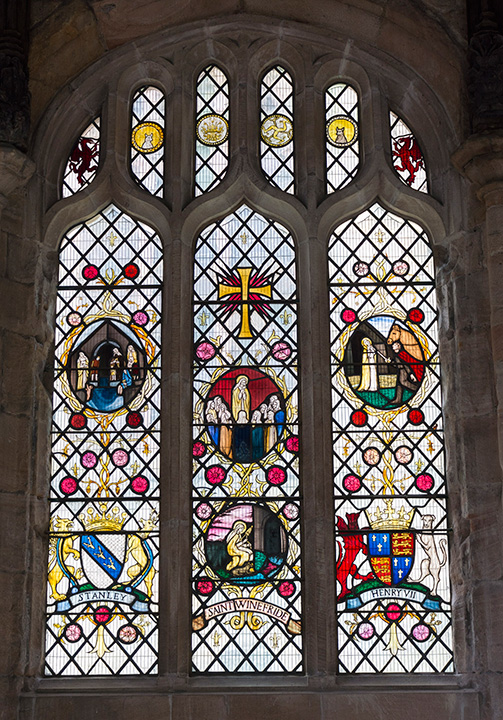
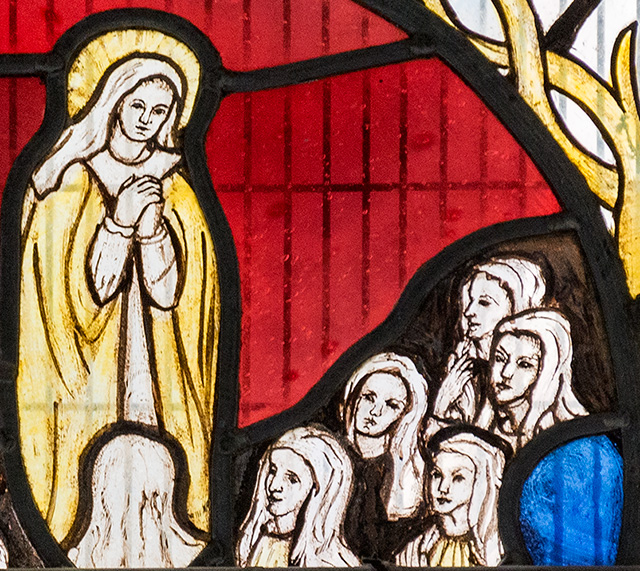
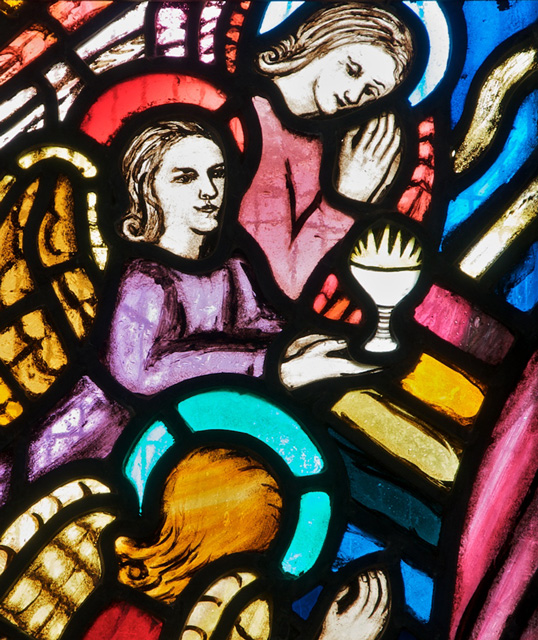
I finally managed to match the style with smaller figures in other works by Joan Howson that I have come across in Wales. Figures of angels in her east window at Llanfihangel-y-traethau, not far from Porthmadog, are very close in style, and there are similarities in the painterly style of the two little windows tentatively attributed to Howson in the church porch at Penmorfa. The redundant church at Penmorfa, now in the care of the Friends of Friendless Churches, is a few miles to the north of Porthmadog, where the artist set up her studio in the late 1950s or 60s. During the war she had been instrumental in bringing young evacuees to Plas Tan-y-Bwlch, near Maentwrog, east of Porthmadog. She also made a window for the church at Maentwrog in 1955, signed with the gull mark of the studio established by her partner Caroline Townsend, who died in 1944.
The windows at Penmorfa were of two Welsh saints, Cybi and Cyngar, and an earlier window by her in south Wales, at Pontarddulais, includes larger figures of more Welsh saints Teilo and Carannog. I was curious as to why Carannog was included in the window, who doesn’t have any local associations with Carmarthenshire or the Swansea area, but the image of the saint is one of only three that I have found in a church in Wales. A further link between Joan Howson and the window in Holywell is that the artist was born in the same county (Flintshire) although further south at Overton, but perhaps she still had contacts in the area. It is possible however, that the Holywell window was not by Howson but by a glass painter who worked with her in her later years in Wales.

